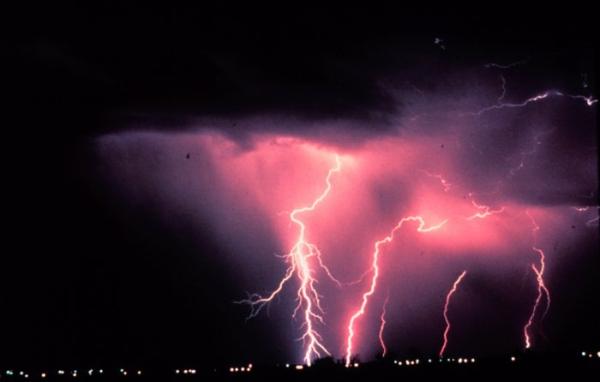David Everette was simply walking to a store when making the absolute wrong decision during a fierce thunderstorm cost him his life.
Two nights ago, with thunder and lightning bearing down and the rain intensifying, the resident of Sanford, NC realized he would not make it to his destination in time, so he reportedly took shelter under a large tree.
Soon after the 39-year old father of two was found face down and unresponsive, shortly before being declared dead at the scene.
Had Everette known that it would have been far better to get soaked while racing to a building, rather than duck under a tree, this terrible tragedy might have been averted. And unfortunately, the incident serves to further underscore the importance of knowing what to do – and what not to – when lightning is even remotely nearby.
"Everette was trying to run to the store when the storm hit but did not make it," reported ABC affiliate WTVD, a Raleigh-Durham TV station, quoting a Sanford pastor. The station added that the pastor said that "Everette tried to seek shelter under an oak tree."
 Over the last 10 years there have been 305 deaths in the United States officially attributed to lightning strikes, according to the National Weather Service. Everette was the seventh person to be fatally struck by lightning this year, and based on local reports it appeared he was hit by a "side flash," one of five ways lightning can strike.
Over the last 10 years there have been 305 deaths in the United States officially attributed to lightning strikes, according to the National Weather Service. Everette was the seventh person to be fatally struck by lightning this year, and based on local reports it appeared he was hit by a "side flash," one of five ways lightning can strike.
"A side flash (also called a side splash), occurs when lightning strikes a taller object near the victim and a portion of the current jumps from taller object to the victim," states the NWS website (image courtesy: NWS). "Side flashes generally occur when the victim is within a foot or two of the object that is struck. Most often, side flash victims have taken shelter under a tree to avoid rain or hail."
There are four other ways lightning can strike: by "direct strike," which is more uncommon but potentially most deadly since it hits you directly; via "ground current," when lightning hits a tall object and travels to someone standing nearby; and by "conduction," where electricity travels through plumbing or metal, like an outdoor fence. And lastly, people can be caught in "streamers," which is a less commo n and more intricate process involving being in the vicinity of a strike.
n and more intricate process involving being in the vicinity of a strike.
Broken down by gender, males are far more likely to be killed by lightning. Between 2007 and 2016, 240 of the 305 people killed in the U.S. were male, or 79 percent of all victims. And this year, six of the seven fatalities were men.
Sanford is located in central North Carolina, which is the third deadliest state for lightning strikes, having recorded 198 deaths since 1959. Florida, which is nearly surrounded by warm water – especially in the summer, which fuels thunderstorms with hot, moist air – has produced the most fatalities of any state by far, with 491. Texas is second with 221 deaths since 1959.
The key to staying safe during a thunderstorm is knowing what to do. And NOAA, the National Oceanic and Atmospheric Administration, which oversees the National Weather Service, starts with the most important fact of all: "If you hear thunder, lightning is close enough to strike you." And that means you should take action immediately.
The first option, NOAA states, is to head to a "substantial building with electricity or plumbing or an enclosed, metal-topped vehicle with windows up," and to remain in "safe shelter at least 30 minutes after you hear the last sound of thunder."
If you're indoors already, or when you arrive there, it's strongly recommended that you stay away from anything that can "put you in direct contact with electricity," which includes computers and phones, or anything that can serve as a conductor, like plumbing and faucets.
And if you're outdoors and cannot make it to safe shelter, NOAA says, and we quote, these six "Last Resort Outdoor Risk Reduction" guidelines must be followed, with the hope that they "may reduce your risk":
- Immediately get off elevated areas such as hills, mountain ridges or peaks
- Never lie flat on the ground
- Never shelter under an isolated tree
- Never use a cliff or rocky overhang for shelter
- Immediately get out and away from ponds, lakes and other bodies of water
- Stay away from objects that conduct electricity (barbed wire fences, power lines, windmills, etc.)
Using the last decade's statistical average, 23 more Americans will be killed in the next five-plus months from lightning strikes. But if these safety guidelines can be shared more widely, tragic deaths like David Everette's can be avoided.




